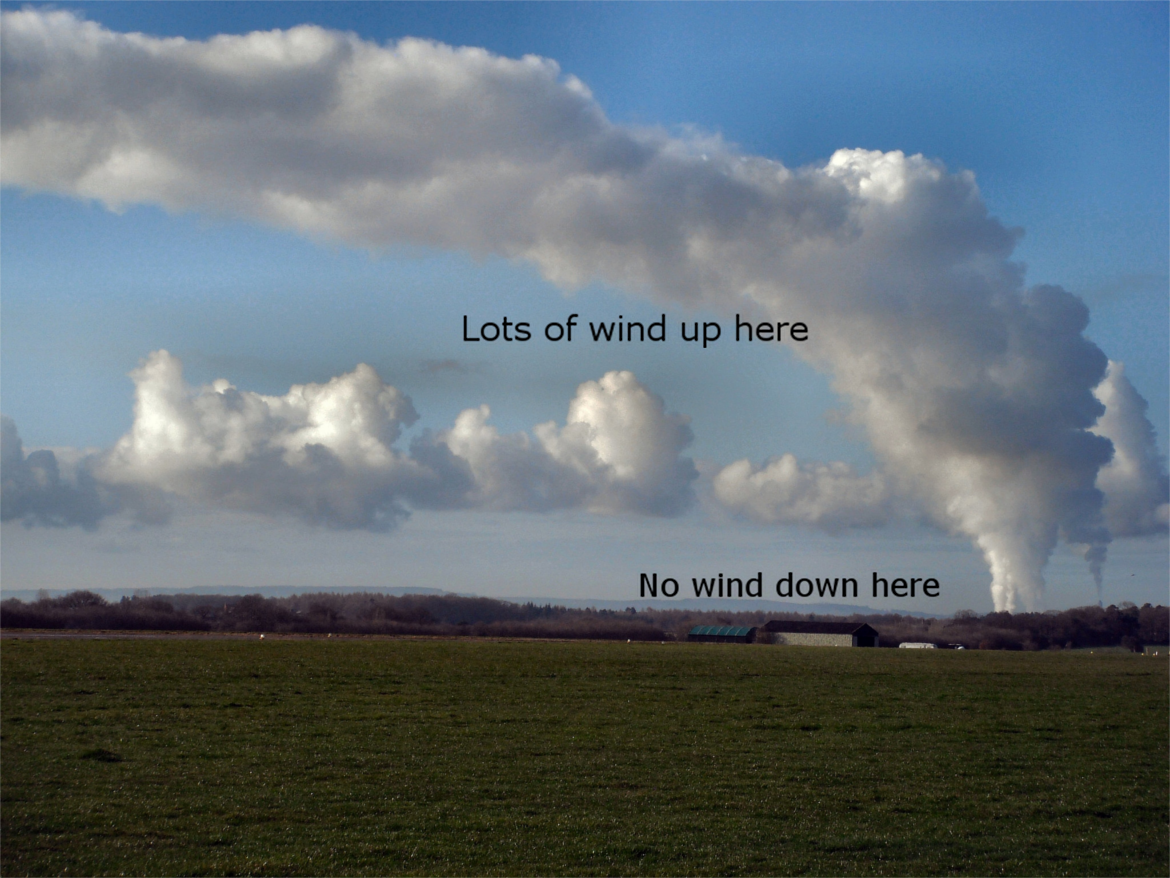Sailors commonly talk about the sea breeze. This leaves lake sailors feeling left out. So, we asked Chelsea Carlson, of Sea Tactics, to educate us on the lake breeze. A professional meteorologist, Chelsea provides sailors with weather forecasting, online courses, and weather coaching. She is also the U.S. Sailing Team meteorologist!
Background: 3-D Thermal Circulation
Most people think of the sea breeze as a wind that blows from water towards land. While that’s technically correct, there is more to it. It’s easiest to understand by visualizing the sea breeze as a 3-D thermal circulation, driven by convection (think “hot air rises”).
Thermal circulations are entirely heat driven. Thermal wind usually occurs on the microscale (1-10s of miles) and often depends on local geography. This thermal wind can exist either independently from the prevailing gradient wind, or it can interact with it.
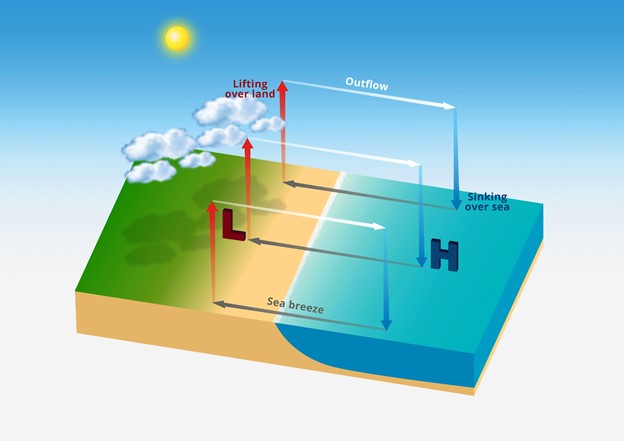
One often-forgotten piece of this puzzle is the outflow wind above the surface flowing from land to sea, which completes the circulation. This is an important piece of the puzzle. When there is an offshore gradient wind (flowing off the shore) above the surface, it enhances this thermal circulation (see below).
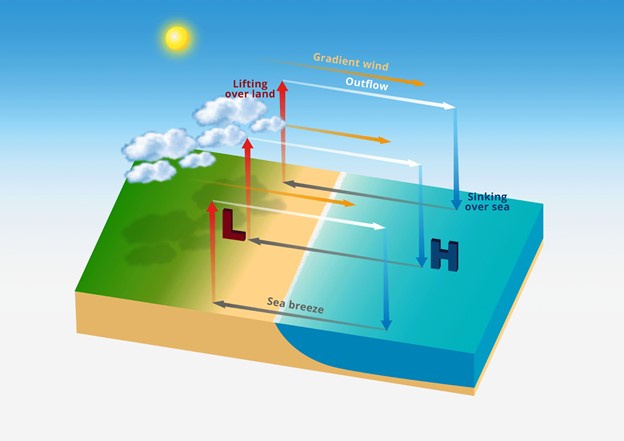
It is a common misconception that if the gradient wind is blowing onshore (blowing onto the shore) that it will “add to” the sea/lake breeze. But as you can see from the graphic below, it actually inhibits this circulation by cutting off the upper-level outflow.
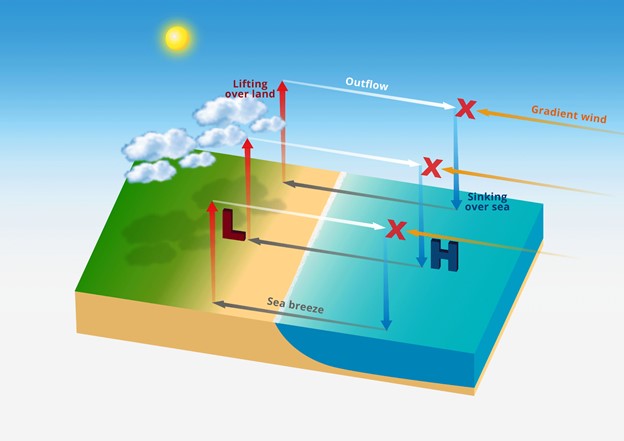
So there are really two scenarios that set us up well for a thermal circulation:
- No gradient wind so that the circulation is uninhibited
- Offshore gradient wind that couples with the upper level flow – that is light to moderate.
One other caveat is that the gradient wind cannot be too strong, or it will shear apart the circulation. So, a rule of thumb is that gradient winds can’t be averaging more than around ~15 knots. If winds are stronger than that – it is most likely a gradient wind, not a lake/sea breeze.
How do we apply this to a lake breeze?
When there is a prevailing gradient flow, one shoreline will have offshore flow and one will have onshore flow. The lake breeze will develop differently on each side of the lake because of this. The windward shore will have better lake breeze development and the leeward shore will have lesser or no development.
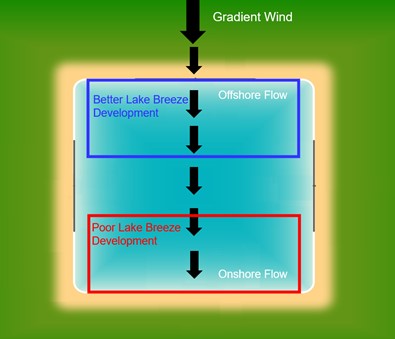
When there is no gradient wind, the lake breeze develops on all sides. It will first begin within ~100 yards of the shoreline and will gradually expand towards the middle of the lake. This is assuming the lake is large enough to support this type of circulation (see below!)
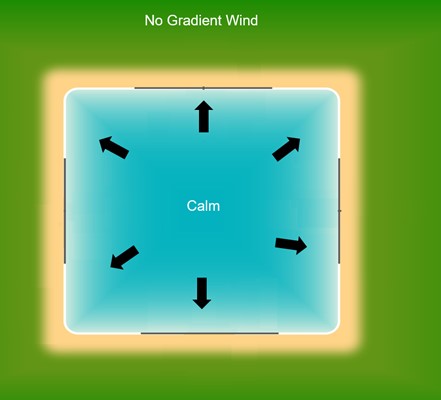
Factors to consider when looking for a lake breeze:
How big does a lake need to be to have a lake breeze develop?
While there’s no exact distance at which the lake breeze will develop, typically the lake needs to be at least a few miles wide. The larger the lake (like the Great Lakes), the better chance that it has enough room to develop a thermal circulation. Lakes smaller than a few miles will be mainly subject to the prevailing gradient wind, possibly altered by local effects. When the prevailing winds are very light on a very small lake, it is very difficult to get a thermal circulation along the shores.
Temperature: the “thermal ingredient”
You need at least 5 degrees (F) difference between the water temperature and the warm air over land in order to get thermal circulation. Sunny skies also help a lot and allow effective sinking motion over the water. This is why it’s important to check the water temperature of the venue!
Recap
- Thermal circulations are heat driven and exist in 3-D.
- Thermal circulations can be enhanced by the gradient wind, or hindered by it, at the upper levels.
- Offshore flowing gradients and very weak gradients are favorable for thermal circulation development.
- On a lake, one shoreline (windward) will have a better chance at thermal development than the other (leeward shoreline).
- The size of the lake and the temperatures of the water and the environment over the land help determine if there will be a thermal circulation
SailZing Wind Category
Sea Tactics Website
Sea Tactics on YouTube (good videos!)
Sea Tactics on Facebook

